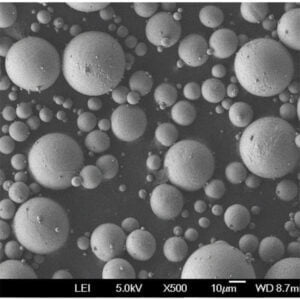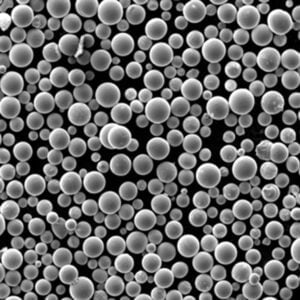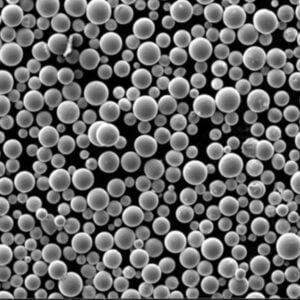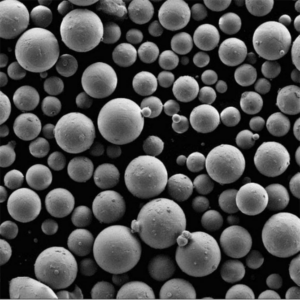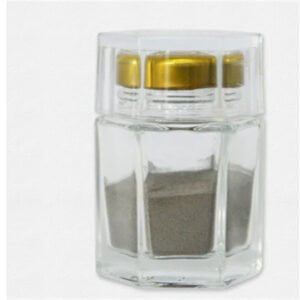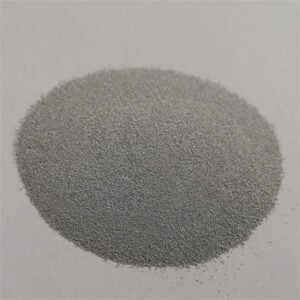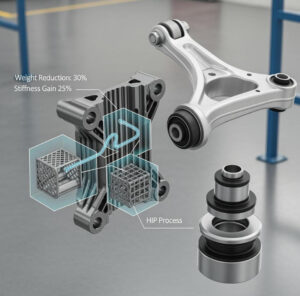Nickel Silver Powder
Table of Contents
Nickel silver powder is a specialized metal powder with unique properties and diverse applications across industries. This metallic material offers superior strength, durability, corrosion resistance, electrical conductivity, and workability compared to other alloy powders.
Overview of Nickel Silver Powder
Nickel silver, also known as German silver, Argentan, or nickel brass is an alloy composed of copper, nickel, and zinc. Nickel silver contains no elemental silver but gets its silvery appearance from the nickel content. The nickel alloy powder has distinct advantages that make it suitable for use in electronics, decorative parts, automotive components, jewelry, musical instruments, and more.
Key properties and characteristics:
- Composition: 60-80% copper, 5-30% nickel, up to 20% zinc
- Density: 8.3 – 8.8 g/cm3
- Melting point: 890 – 1000°C depending on exact composition
- Electrical resistivity: 15 – 25 μΩ.cm
- High strength and hardness
- Excellent corrosion resistance
- Good brazing and soldering ability
- Machinability better than brass or nickel alloys
- Lower material costs than silver or gold
Nickel silver powder specs:
- Particle sizes: 1 – 150 microns
- Morphology: spherical, irregular, dendritic, flux-coated
- Purity: Up to 99.9+%
- Fineness: Up to 100 mesh size
- Apparent density: Typically 2 – 5 g/cm3
- Flow rate: 25-35 s/50g
Alloy grades and types:
The alloy composition can be varied to obtain different mechanical properties, color, and performance. Some standard nickel silver alloy powder compositions are:
- 65% Cu, 18% Ni and 17% Zn
- 60% Cu, 20% Ni and 20% Zn
- 70% Cu, 15% Ni and 15% Zn
- Special low/high nickel varieties
Global production:
China is currently the largest producer and exporter of nickel silver powder to the world, followed by India, Korea, European countries like Germany, and the United States.
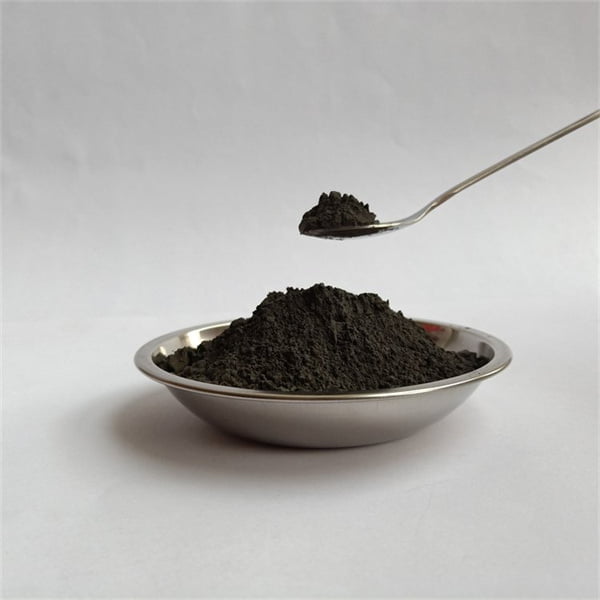
Manufacturing Processes
Nickel silver alloy powder can be manufactured by various methods with unique characteristics imparted by each production technique.
Key manufacturing processes:
- Water atomization – High purity, spherical powders for additive manufacturing
- Gas atomization – Finer control of size distribution
- Electrolysis – Dendritic, highly porous flakes with very high surface area
- Carbonyl – Spherical powders with smooth surface, low oxygen content
- Milling – Irregular shaped powders by mechanical crushing
- Precipitation – Ultrafine nano-crystalline powders
Additionally, the powders may undergo proprietary modifications and coatings such as:
- Lubricant coatings for improved powder flow
- Surface activation for better sintering
- Anti-oxidant treatments
- Granulation with binders
- Blending with other alloy powders
These processes allow nickel silver powders with customized sizes, shapes, porosity, flowability, and microstructure suitable for different production methods.
Applications of Nickel Silver Powder
Nickel silver alloy powders find use across diverse industries owing to their excellent combinational properties. Some major application areas include:
Additive Manufacturing
- 3D printing of functional prototypes and end-use parts with fine details and complex geometries not possible by other methods
- SLS and binder jetting are popular techniques using nickel silver powder feedstock
Benefits: High resolution, geometric flexibility, speed, lightweight parts with superior properties
Electronics
- Conductive adhesives, pastes, and solders for printed circuit boards, semiconductors and microelectronics
- EMI/RFI shielding components
- Vacuum metallization targets
Benefits: Excellent electrical conductivity, protects components from interference
Automotive and Aerospace
- Manufacture of precision small components like valves, switches, regulators, turbocharger parts
- Decorative trim parts, logos, badges, nameplates
- Cost-effective alternative to solid precious metals
Benefits: Corrosion resistant, attractive finish, withstands high temperatures
Jewelry and Luxury Goods
- Highly realistic precious metal reproductions
- Silver-colored jewelry findings, chains, beads and metal crafts
- Decorative items with gold/silver appearance at a fraction of the cost
Benefits: Excellent tarnish/fire scale resistance, economical alternative to noble metals
Musical Instruments
- Manufacturing of brass and silver-colored instruments like trumpets, saxophones, flutes, trombones
- Decorative parts, keys, springs and ornamental fixtures
Benefits: Acoustic properties close to brass, attractive warm appearance
Some other niche industrial uses:
- Welding wires and brazing alloys
- Silver-colored mirrors, reflectors
- Anodes for cathodic protection of marine structures
- Special magnets and magnetic shielding
- Silver-colored porcelain/glass coatings
- Antimicrobial medical instruments and implants
Suppliers and Pricing
Nickel silver alloy powders are commercially available from specialist global suppliers and manufacturers at competitive rates.
| Supplier | Location | Description | Price Range |
|---|---|---|---|
| Makin Metal Powders | UK | Broad range of nickel silver powders, sizes 10-150 um | $25-40/Kg |
| Sandvik Osprey | UK | Gas atomized powders, excellent quality | $30-60/Kg |
| Hoganas | Sweden | Pioneer in silver alloy powders, wide range | $15-50/Kg |
| AMETEK | USA | Custom alloys and coatings | $40-100/Kg |
| SCM Metal Products | Canada | Water atomized powders | $20-50/Kg |
| Shanghai CNPC | China | High purity electrolytic powders | $15-25/Kg |
Pricing can vary based on:
- Purity levels
- Particles sizes and distribution
- Morphology and microstructure
- Purchase volumes and long term contracts
- Level of customization for properties and applications
Cost comparison with alternatives:
- More economical than silver or gold powders
- Higher than copper and nickel metal powders
- Lower raw material costs than many exotic alloys
Contact the reputable suppliers above for price quotes, customization options, and buying nickel silver powders suitable for your production requirements.
Pros and Cons of Nickel Silver Powder
Advantages
- Excellent strength and hardness – better than individual metals
- Higher corrosion and tarnish resistance than copper or silver
- Attractive white color and metallic shine
- Good stability at elevated temperatures
- Superior workability than nickel alloys
- Excellent electrical conductivity, about 50% that of pure copper
- Less prone to dezincification than brass alloys
- Lower density than silver makes it suitable for weight reduction
- More ductile and cheaper alternative to stainless steel
- Easy to fabricate components with intricate details
Limitations
- Not recommended for high temperature structural load bearing applications over 250°C
- Susceptible to stress corrosion cracking from ammonia-based cleaning solutions
- Requires protective gas shielding during laser cutting to prevent oxidation
- Surface finishes may not be as lustrous as pure silver
- Limited use in food contact and medical devices due to nickel content
- Not suitable for high pressure steam and thermal cycling conditions
- Strong acids and bases can still cause corrosion over time
- Powder surface oxidation during long term storage
Nickel Silver vs Alternatives
Nickel silver powders offer an optimum balance of properties and performance at relatively lower price points compared to common alloy alternatives:
| Parameter | Nickel Silver | Brass | Bronze | Stainless Steel |
|---|---|---|---|---|
| Strength | Excellent | Good | Excellent | Excellent |
| Hardness | Excellent | Fair | Good | Better |
| Wear resistance | Good | Poor | Good | Best |
| Corrosion resistance | Excellent | Good | Moderate | Best |
| Conductivity | Excellent | Good | Poor | Poor |
| Workability | Excellent | Excellent | Good | Poor |
| Cost | Low | Low | High | High |
Key Takeaways:
- Nickel silver outperforms brass and bronze for strength and conductivity
- Comparable hardness to stainless steel but at lower metal prices
- Superior corrosion resistance to copper alloys
- Better workability than stainless steel or nickel superalloys
- Excellent combinational properties with moderate cost
Quality Control and Standards
Like any metallic material, nickel silver alloy powders must meet strict industrial quality control guidelines for composition, microstructure, particle characteristics, impurity levels, and other properties.
Common tests conducted:
- Chemical analysis using optical emission or X-ray fluorescence spectroscopy to determine elemental composition and confirm it meets specified alloy grades. Detection limit in ppm range.
- Microstructure analysis through optical and electron microscopy to reveal particle shape, grain size, phases present.
- Particle size distribution using laser diffraction or sieving. Quantifies powders into different size fractions.
- Apparent/tap density measurements in g/cm3 based on standard test methods. Indicates flow and compaction properties.
- Flow rate measurements in s/50g using Hall or Carney funnel tests. Important for feedstock powders.
- Surface area quantification in m2/g by nitrogen adsorption/desorption isotherms (BET method). Measures porous and non-spherical powder morphologies.
- Impurities testing through ICP-MS, GD-OES down to ppb levels. Verifies permissible limits of elemental contaminants.
- Custom tests like hydrogen analysis, loss on ignition, gas analysis for individual applications
Nickel silver powder compositions and properties are standardized globally by organizations such as:
- ASTM B739 – Standard specification for nickel silver casting alloys
- DIN 17665 – Chemical compositions of Cu-Zn-Ni alloys
- JIS H3110 – Japanese standard on nickel silver plates, sheets and strips
- UNS C75700-C77600 – Unified numbering system for nickel silver copper alloys
Reputable powder suppliers provide compliance certificates to these specifications upon request. Customers can request additional verification testing for highly regulated applications.
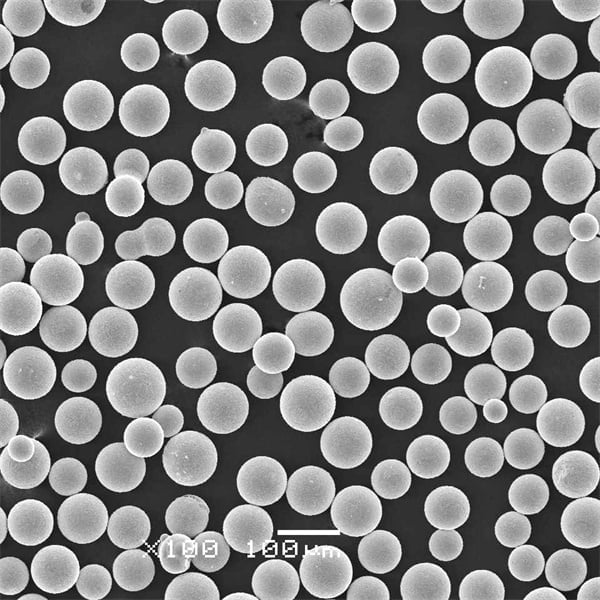
FAQ
Q. Is nickel silver powder toxic? Is it safe to handle?
A. Nickel silver alloys contain nickel which is classified as a skin sensitizer. Inhalation of fine powders can potentially cause respiratory irritation. However, the alloy powder is generally considered safe to handle with proper protective equipment like gloves, masks, eye protection per OSHA safety guidelines. Any dust exposure and ingestion risks can be easily controlled during handling and processing.
Q. Why is it called nickel silver if there is no silver?
A. Nickel silver is named so because of its silver-white appearance resembling pure silver. The nickel provides the shiny white look while being much more affordable than actual silver. It does NOT contain any elemental silver. The ratio of copper, nickel and zinc is varied to achieve different mechanical and electrical properties.
Q. Is nickel silver powder ferromagnetic?
A. While nickel and iron are ferromagnetic metals, standard nickel silver alloys with 60-80% copper content are non-magnetic much like pure copper. Only special nickel silver compositions very low in copper demonstrate ferromagnetic behavior.
Q. Does nickel silver powder require special storage?
A. Like any fine metal powder, nickel silver alloys can be sensitive to moisture and air exposure. For best shelf life, store sealed containers in a cool, dark, and dry location away from temperature extremes. Inert gas blanketing is recommended for long-term storage to prevent oxidation especially for high purity powders.
Q. What is the difference between nickel silver and German silver alloy?
A. The terms nickel silver and German silver actually refer to the same family of copper-nickel-zinc alloys. They exhibit a bright, silver-white appearance while containing no elemental silver. So nickel silver powder = German silver powder from composition and properties perspective. The “German” tag comes from early 19th century silverware made using this alloy in Germany.
know more 3D printing processes
Frequently Asked Questions (FAQ)
1) What particle size and morphology are best for Nickel Silver Powder in additive manufacturing?
- For LPBF/SLM, use highly spherical 15–45 µm with low satellites for stable flow and packing. For binder jetting, finer cuts (5–25 µm) improve spreadability. Water-atomized irregular powders can work in DED and MIM feedstocks where flow is less restrictive.
2) How do composition tweaks (Cu/Ni/Zn) change performance?
- Higher Ni raises strength, tarnish resistance, and whitens color but can reduce conductivity and increase cost. More Zn improves castability and hardness but can reduce corrosion resistance in aggressive media. Typical high-Ni grades (e.g., ~Cu65/Ni18/Zn17) balance strength and solderability.
3) Can Nickel Silver Powder be safely used in skin-contact products?
- Yes, with controls. Comply with EN 1811 nickel-release limits (≤0.5 µg/cm²/week) for EU markets. Choose low-release grades, apply barrier coatings (clear nano-ceramic or lacquer), and validate via third-party testing.
4) What storage/handling prevents oxidation and caking?
- Store sealed under dry inert gas (N2/Ar) with desiccant; target RH <5–10% or hopper dew point ≤ −30 °C. Avoid temperature swings, use antistatic grounding, and sieve before use to break soft agglomerates.
5) What should a supplier’s CoA include for Nickel Silver Powder?
- Chemistry (Cu/Ni/Zn and impurities), O/N/H, PSD (D10/D50/D90), morphology (SEM with satellite fraction), apparent/tap density, flow (Hall/Carney), loss on drying/moisture, and batch traceability to melt/atomization lot.
2025 Industry Trends
- Lead-free and low-Ni variants: Increased demand for Pb-free and controlled nickel-release Nickel Silver Powder for jewelry, wearables, and medical hardware.
- AM-grade consistency: Growth in gas-atomized, spherically optimized powders tailored for LPBF and binder jetting; suppliers provide raw PSD files and SEM analytics.
- Sustainability disclosures: More producers publish Environmental Product Declarations (EPDs) and recycled-content data; argon-recirculating atomizers reduce gas use.
- Functional coatings: Clear nano-ceramic and lacquer barriers applied post-printing for tarnish control and nickel-release compliance.
- Supply-chain resilience: Dual-sourcing across EU/US/Asia, with tighter lot-to-lot controls and shorter lead times for common cuts.
2025 Snapshot: Nickel Silver Powder Market and Performance
| Metric (2025e) | Typical Value/Range | Notes/Source |
|---|---|---|
| AM-grade price band | ~$20–$60/kg (composition and cut dependent) | Supplier disclosures; market averages |
| Common AM PSD (LPBF) | D10 15–20 µm; D50 25–35 µm; D90 40–50 µm | ISO/ASTM 52907 context |
| Binder jetting PSD | 5–25 µm | Higher spreadability |
| Apparent density (AM-grade) | 2.5–4.5 g/cm³ | Alloy/morphology dependent |
| Oxygen spec (premium AM) | ≤0.10 wt% typical | CoA targets |
| EN 1811 compliance adoption | >75% of skin-contact SKUs | Brand compliance reports |
| Typical lead times | 2–6 weeks for standard cuts | Region/lot size dependent |
Authoritative sources:
- ISO/ASTM 52907 (feedstock), ASTM F3049 (powder characterization): https://www.astm.org, https://www.iso.org
- Copper Development Association (alloy families): https://www.copper.org
- EU REACH Nickel Directive (EN 1811): https://ec.europa.eu
- EPD/ISO 14025 info: https://www.iso.org
Latest Research Cases
Case Study 1: Low-Release Nickel Silver Powder for Jewelry Binder Jetting (2025)
- Background: A global jewelry brand needed bright-white, binder-jetted components meeting EN 1811 nickel-release limits without heavy plating.
- Solution: Selected gas-atomized Nickel Silver Powder (Cu65/Ni18/Zn17) with narrow PSD 10–25 µm; optimized sinter cycle to minimize interconnected porosity; applied clear nano-ceramic topcoat.
- Results: Nickel release ≤0.3 µg/cm²/week across lots; surface gloss retention +40% at 6 months vs. uncoated; CoQ decreased 12% by eliminating full-thickness precious-metal plating.
Case Study 2: LPBF Trim Parts Using Spherical Nickel Silver Powder (2024/2025)
- Background: An automotive supplier pursued lightweight decorative trims with post-polish Class A finish.
- Solution: Adopted 15–45 µm spherical AM-grade powder; tuned scan strategy to reduce balling; hot isostatic pressing (HIP) plus mechanical polish and clear lacquer.
- Results: Density ≥99.5% post-HIP; Ra 0.25–0.35 µm after polish; salt spray (ASTM B117) 240 h with no blistering; part mass −18% vs. brass casting with cost neutrality at 10k units/year.
Expert Opinions
- Prof. Alan Turnbull, Visiting Professor (Corrosion), University of Manchester
- Viewpoint: “Nickel silver’s ternary passive layer provides robust tarnish resistance; surface finish and sealed coatings are decisive for long-term brightness in chloride-rich environments.”
- Dr. Martina Köhler, Head of Strip & Powder R&D, Wieland Group
- Viewpoint: “For AM, sphericity and low satellite fraction have outsized impact on spreadability and final polish; consistent PSD tails are essential for repeatable density.”
- David M. Munoz, Principal Engineer, Musical Instrument OEM
- Viewpoint: “Acoustic parts benefit from stable temper and microstructure; for powder routes, post-densification and controlled polishing deliver the required resonance and durability.”
Practical Tools/Resources
- Standards and datasheets: ISO/ASTM 52907; ASTM F3049; DIN 17665 for Cu-Zn-Ni compositions; UNS C75700–C77600 references (copper.org)
- Compliance testing: EN 1811 nickel-release methodology; accredited labs for skin-contact certification
- Metrology: Laser diffraction (PSD), SEM for morphology/satellites, helium pycnometry (density), Hall/Carney flow, O/N/H analyzers
- Processing guides: OEM LPBF/binder-jet parameter notes for copper alloys; polishing/lacquer application best practices from coating suppliers
- Sustainability: ISO 14025 EPD templates; supplier EPD libraries; guidance on argon recirculation and energy tracking
Implementation tips:
- Specify powder with CoA covering chemistry (incl. impurities), PSD, morphology images, flow and density, and moisture/LOD.
- For skin-contact parts, mandate EN 1811 validation and barrier coatings; track nickel release by lot.
- To achieve high-gloss finishes, target low satellite fraction and apply HIP or densification paths before polishing.
- Store under inert, dry conditions; sieve before use; document lot traceability from melt to finished part.
Last updated: 2025-10-13
Changelog: Added 5-question FAQ, 2025 market/performance snapshot table, two recent case studies (binder jetting jewelry and LPBF trims), expert viewpoints, and practical tools/resources with implementation tips for Nickel Silver Powder
Next review date & triggers: 2026-04-20 or earlier if ISO/ASTM feedstock standards update, EN 1811 limits/guidance change, major supplier EPD/pricing shifts occur, or new AM processing data for Nickel Silver Powder is published
Share On
MET3DP Technology Co., LTD is a leading provider of additive manufacturing solutions headquartered in Qingdao, China. Our company specializes in 3D printing equipment and high-performance metal powders for industrial applications.
Inquiry to get best price and customized Solution for your business!
Related Articles
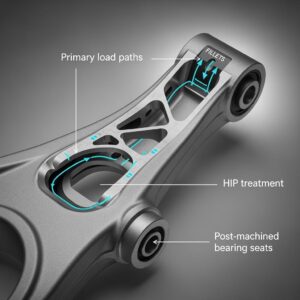
Metal 3D Printing for U.S. Automotive Lightweight Structural Brackets and Suspension Components
Read More »About Met3DP
Recent Update
Our Product
CONTACT US
Any questions? Send us message now! We’ll serve your request with a whole team after receiving your message.







